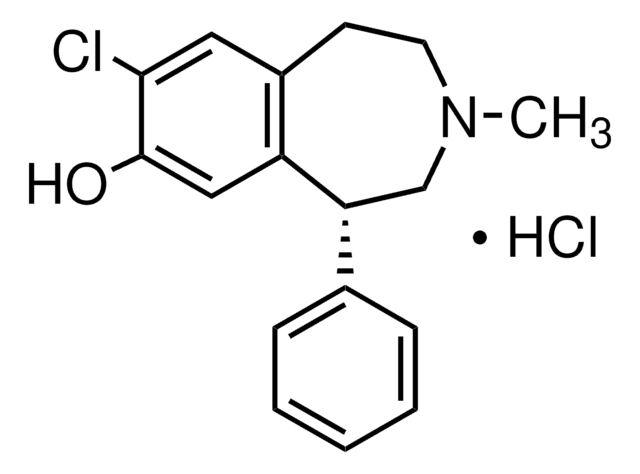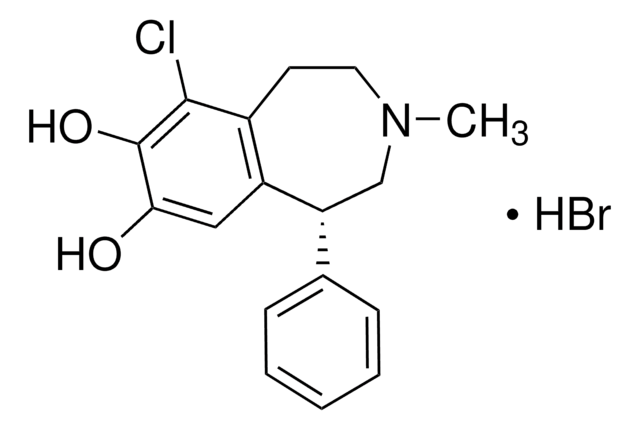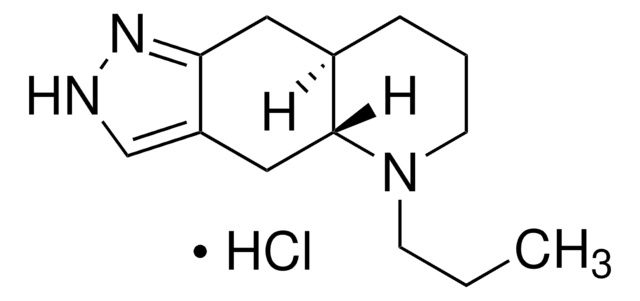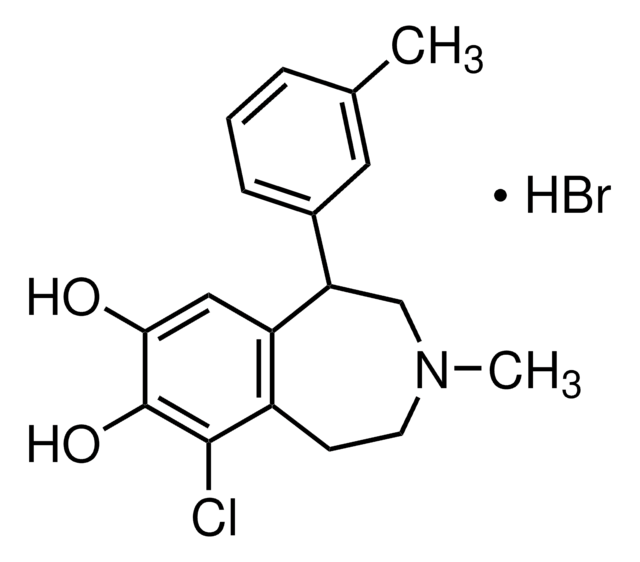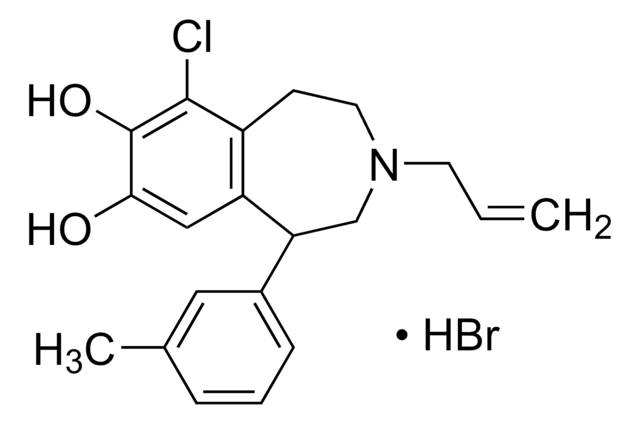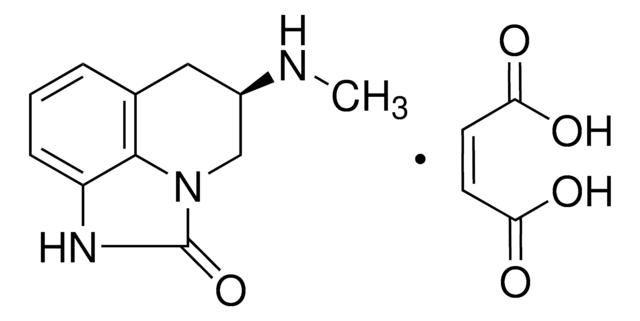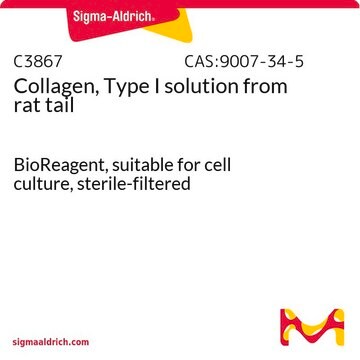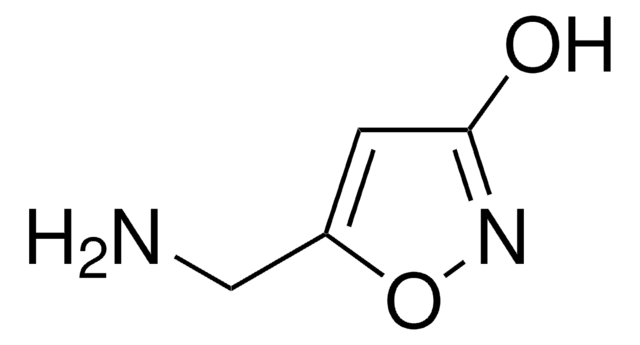Kluczowe dokumenty
S179
R(+)-SKF-81297 hydrobromide
≥98% (HPLC), solid
Synonim(y):
R-(+)-6-Chloro-7,8-dihydroxy-1-phenyl-2,3,4,5-tetrahydro-1H-3-benzazepine hydrobromide
About This Item
Polecane produkty
Próba
≥98% (HPLC)
Formularz
solid
aktywność optyczna
[α]22/D +15.14°, c = 0.52 in DMF(lit.)
warunki przechowywania
desiccated
protect from light
kolor
white to off-white
rozpuszczalność
H2O: 6 mg/mL
DMSO: soluble
ciąg SMILES
Br[H].Oc1cc2[C@H](CNCCc2c(Cl)c1O)c3ccccc3
InChI
1S/C16H16ClNO2.BrH/c17-15-11-6-7-18-9-13(10-4-2-1-3-5-10)12(11)8-14(19)16(15)20;/h1-5,8,13,18-20H,6-7,9H2;1H/t13-;/m1./s1
Klucz InChI
RMIJGBMRNYUZRG-BTQNPOSSSA-N
Zastosowanie
- aby przetestować jego wpływ na odpalanie skoków w szczurzych komórkach zwojowych siatkówki
- w ludzkich embrionalnych komórkach nerkowych (HEK) 293T
- do testowania jego działania hamującego w komórkach mikrogleju
Działania biochem./fizjol.
Kod klasy składowania
11 - Combustible Solids
Klasa zagrożenia wodnego (WGK)
WGK 3
Temperatura zapłonu (°F)
Not applicable
Temperatura zapłonu (°C)
Not applicable
Środki ochrony indywidualnej
Eyeshields, Gloves, type N95 (US)
Wybierz jedną z najnowszych wersji:
Masz już ten produkt?
Dokumenty związane z niedawno zakupionymi produktami zostały zamieszczone w Bibliotece dokumentów.
Klienci oglądali również te produkty
Nasz zespół naukowców ma doświadczenie we wszystkich obszarach badań, w tym w naukach przyrodniczych, materiałoznawstwie, syntezie chemicznej, chromatografii, analityce i wielu innych dziedzinach.
Skontaktuj się z zespołem ds. pomocy technicznej